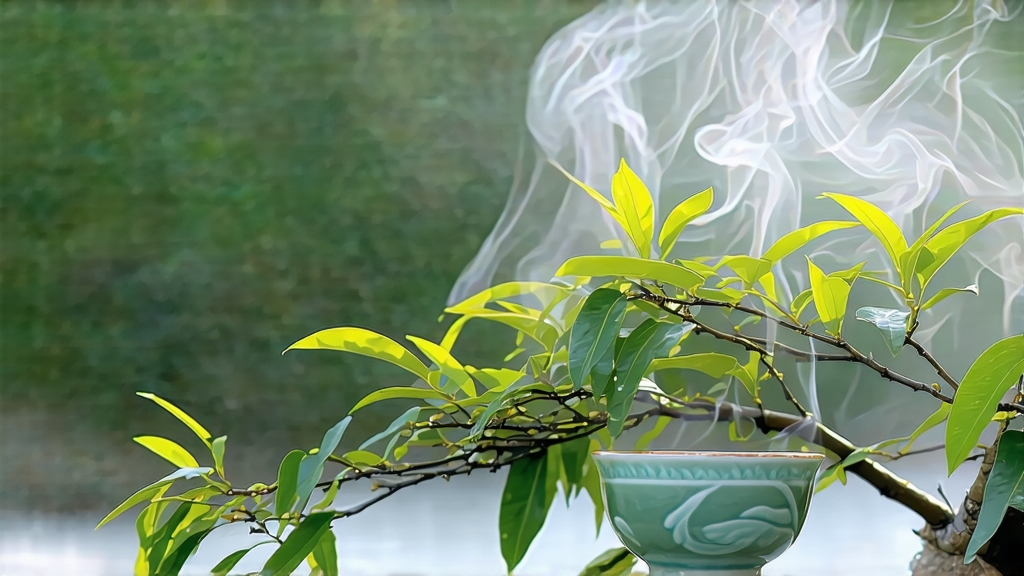
Tucked high on the mist-laden shoulders of Mt. Meng in Sichuan Province, a tea so rare that even seasoned Chinese traders call it “the hermit among yellows” waits for the world’s palate. Meng Ding Huang Ya—literally “Meng Peak Yellow Bud”—is the least exported yet most exalted member of China’s tiny yellow-tea family. To understand it is to glimpse the moment when Song-dynasty emperors still believed that immortality could be steeped, and when monks argued that the color of enlightenment was not saffron but the soft gamboge of a perfectly yellowed leaf.
History: from elixir to exile
The first written record appears in 1083, when the Song emperor Shenzong accepted 116 tiny cakes of “Meng Mountain Sweet Bud” as spring tribute. Court physicians prescribed the infusion for “clearing the eyes and cooling the liver,” a polite way of saying it soothed royal hangovers. By the Ming, loose-leaf fashion replaced compressed bricks; the buds, now gently oxidized in imperial bamboo steam rooms, acquired a golden down that poets compared to “caterpillars spun from sunlight.” When the Qing turned to darker puerh and brisk green teas, Meng Ding Huang Ya retreated into monastic cellars, produced only for local abbots and the occasional scholar in hiding. It resurfaced in 1959 when Sichuan’s provincial government, hunting for teas to gift Chairman Mao’s first state banquet, rediscovered the forgotten technique in a single village called Ganxi. Today less than 1800 kg reach market annually, most pre-sold to collectors in Beijing and Tokyo before the spring equinox.
Micro-terroir: why the mountain makes the color
Mt. Meng thrusts 1456 m into the Sichuan basin, trapping a perpetual cloud belt between 800–1200 m. The combination of 85 % humidity, diurnal swings of 12 °C, and quartz-rich yellow soil forces the tea bush (a local clone of Camellia sinensis var. sinensis nicknamed “Ganxi early”) to synthesize more theaflavins than any neighboring green. These golden polyphenols are the raw canvas on which the yellowing step later paints its mellow sweetness.
Plucking: one bud, one leaf, one dew
The picking window opens for only ten days around Qingming (early April). Workers climb before dawn so that each shoot still wears a single dewdrop; this natural moisture prevents mechanical bruising during the 3 km descent in woven back-baskets. Standard is “one bud, one leaf, half unfurled,” weighing no more than 0.3 g fresh. A skilled picker gathers just 400 g in a morning—barely enough for 100 g of finished tea.
Craft: the art of “sealed yellowing”
Yellow tea’s soul lies between killing-green and full drying, in a humid pause called men huang—“sealed yellowing.” For Meng Ding Huang Ya the choreography runs thus:
- Pan-firing (sha qing): 4 minutes at 160 °C in a cast-iron wok shaped like an inverted bell. The goal is to halt oxidation yet keep 8 % residual enzyme activity—just enough to drive the later yellowing.
- Initial rolling: 8 minutes under 6 kg pressure to bruise cell walls without breaking the bud tip.
- First drying (mao hong): 15 minutes at 90 °C lowers moisture to 45 %. The leaf is now jade-green outside, milky inside.
- Wrapped yellowing: while still 50 °C, the leaf is piled 3 cm thick inside steamed bamboo tubes lined with wet cotton. Tubes are slid into a pine box and buried under rice hulls for 48 hours at 35 °C and 80 % humidity. In this micro-ferment the chlorophyll degrades to pheophytin, catechins dimerize into soft theaflavins, and a hay-like aroma drifts toward cacao.
- Second rolling: lighter, 3 minutes, to re-shape the now yellow-green strip.
- Final drying: three passes—100 °C, 80 °C, 60 °C—each 5 minutes, separated by 30 minutes of rest. The leaf finishes at 5 % moisture, the